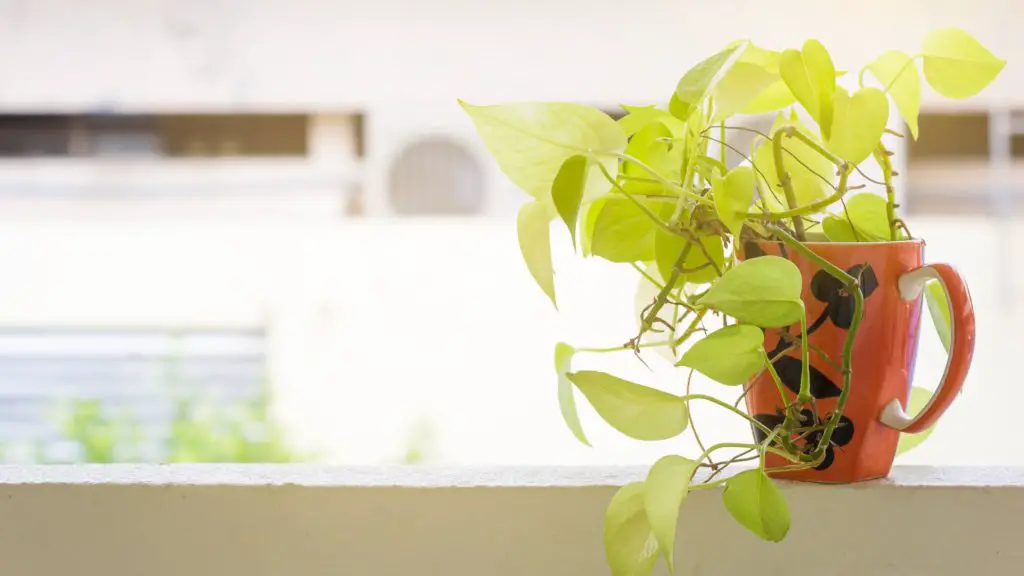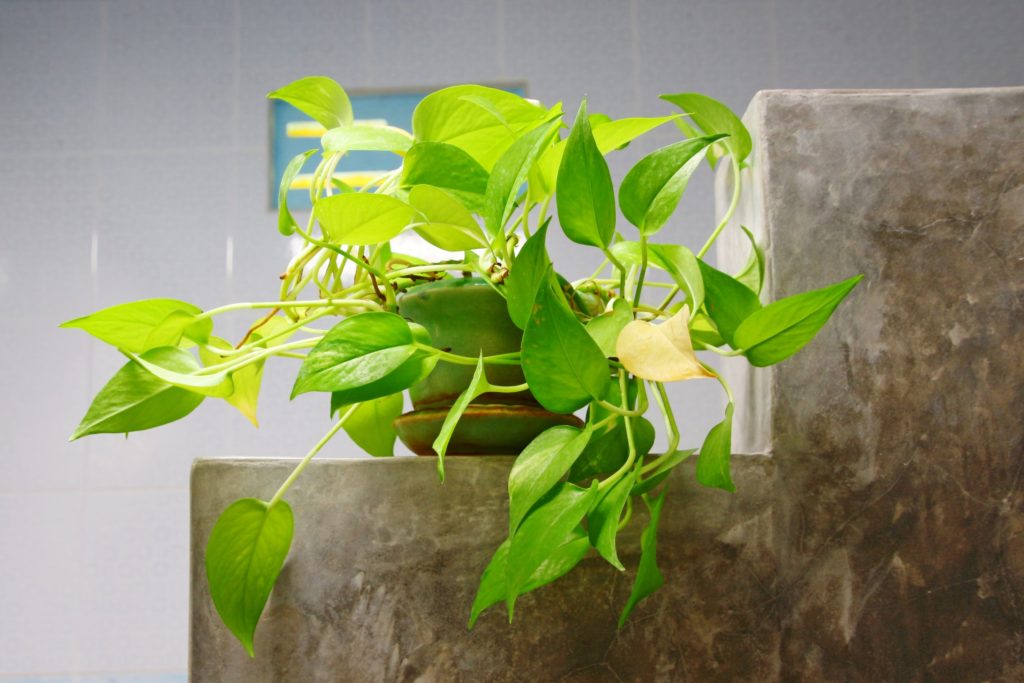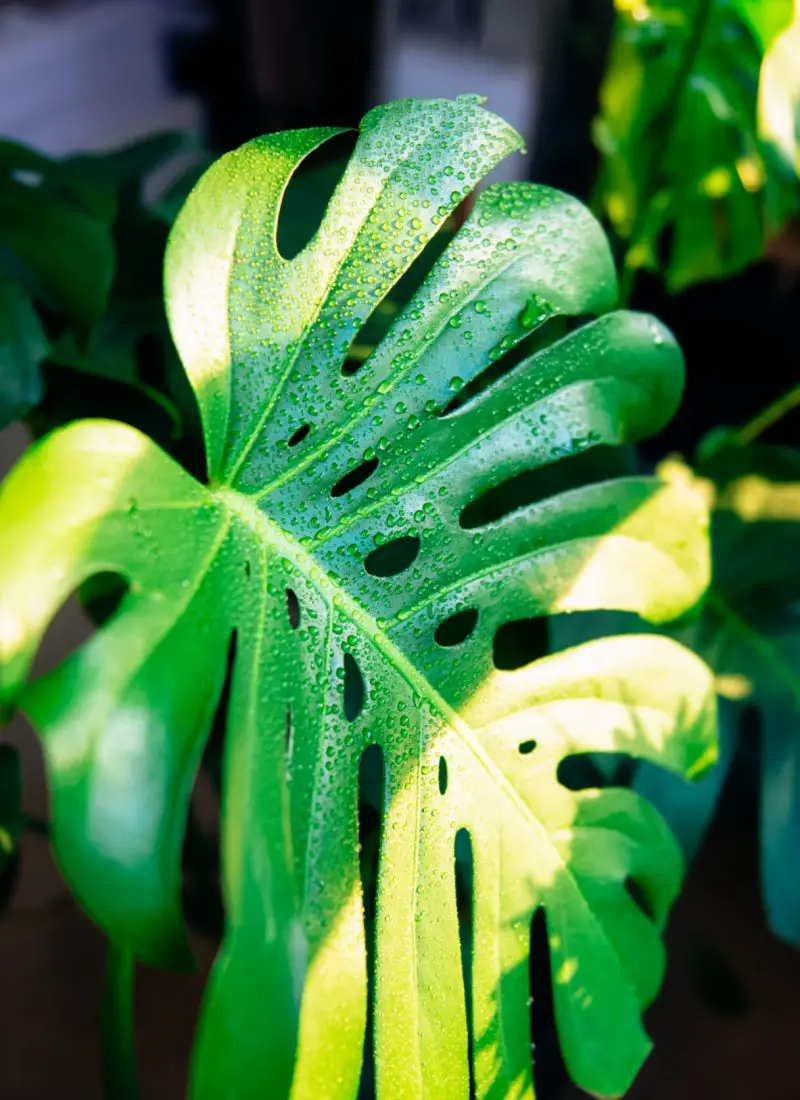
Despite their high humidity needs, Pothos are adaptable and tolerant to most indoor conditions. But some say that a little misting here and there will help keep things humid, so it’s happier. But is this necessary?
As a whole, Pothos don’t require misting to grow well. The practice is not beneficial, mainly because it doesn’t affect the surrounding humidity levels to help the plant grow better. In fact, leftover droplets on the leaves may encourage pests & diseases to infect the plant, causing more problems.
Below, I elaborate on why misting is ineffective, low humidity symptoms in a Pothos, and helpful tips to fix it:
(As an Amazon Associate, I earn from qualifying purchases.)
Is Misting Beneficial for Pothos?

Misting is often recommended for keeping tropical houseplants with high humidity needs like Pothos happy. But the thing is, misting doesn’t raise the surrounding humidity levels enough to make a difference. For misting to be helpful, you’d have to stand by your plant and spritz it every few minutes. And … Ain’t nobody got time for that! If you’re looking for a way to increase humidity for your Pothos plant, there are much better options out there.
Misting may be good in keeping dirt off the plant’s leaves. However, it’s essential to wipe them down with a cloth afterward. Any dew drops left on the leaves can become a potential target for pests & diseases to develop and spread throughout the plant. If you’d like to understand more on the subject, here’s a related article. It’s worth noting that it’s about Monsteras. But the whole debate surrounding misting itself can be applied to all houseplants.
What are the Symptoms of Pothos Suffering from Low Humidity?

If you are worried that your plant may be struggling because it’s not getting enough humidity in your home, these are the symptoms to look out for:
- The leaves have turned brown and crispy around the edges.
- The plant is drooping, despite its adequate watering.
- The leaves have turned yellow.
However, it’s worth noting that these symptoms can also indicate other problems such as overwatering, too much sunlight, and fertilizer burn. It’s best to investigate whether it’s any of these issues first because they are often the most common causes of damage to Pothos. Here’s a brief overview of a Pothos’s basic care needs:
- Sun: 6-8 hours of bright, indirect sunlight.
- Soil: A standard potting mix that’s airy and well-draining.
- Water: Once a week after the top 1-2 inches of soil dries out.
- Fertilizer: Once every 2 months with an all-purpose fertilizer.
- Temperature: 70-90°F; keep the plant away from cold drafts.
- Additional care: Use a moss totem pole to encourage the plant to grow vertically and develop bigger leaves.
Pothos can handle growing in low humidity situations better than you think, which is why this is not a typical issue. But there’s an easy way to track the humidity levels around your plant to ensure it is humid enough for it to grow …
You can use a hygrometer. I often check the current humidity percentage any time my plants are displaying the above symptoms. It takes the guesswork out of figuring out whether lack of humidity is the cause of their sulking in less than a second. I personally use this digital temperature/hygrometer from Amazon, which I highly recommend getting. It has 4.6 stars with pretty great 21,371 ratings.
But what if low humidity does turn out to be the problem? Don’t worry; your plant is not a goner because this can be fixed easily using the instructions specified in this other related article I wrote. But it’s worth noting that leaf damage left on the plant from low humidity won’t improve and are better trimmed off instead.
Frequently Asked Questions about Pothos

Does misting plants help them?
Misting plants does more harm than good, especially to plants with fuzzy leaves. It’ll trap moisture far longer than necessary, which can lead to pests and diseases developing on the plant. The risk is lower on plants with smooth leaves but still entirely possible. It’s better to err on the side of caution and not mist your plants at all.
Do Pothos prefer being near humidifiers?
Pothos thrive best with humidifiers around because it makes the air more humid. Typically, the plant can tolerate most growing conditions, such as low humidity. But providing it with the best will undoubtedly encourage better development overall.
How to care for an indoor Pothos?
A Pothos plant is very easy to care for indoors. Here is a list of things they need to flourish:
- Plenty of bright, indirect sunlight.
- A well-draining and loose soil mixture to grow in.
- Weekly watering after the surface of the soil has dried out.
- Feeding an all-purpose fertilizer every other month except in winter.
- Warm temperatures of 70-90°F, keeping them away from cold drafts.
- High humidity of at least 50% or more.
- A moss totem pole to grow upwards and stimulate larger leaf growth.
How often do Pothos need watering?
As a general rule, weekly watering after the top 1-2 inches of the soil dried out is sufficient to keep Pothos well-saturated. However, it’s worth noting this is just a standard guide and isn’t a one-size-fits-all answer. The frequency of watering will depend on several factors, such as the size of your Pothos, the pot it’s in, the type of soil you’re using, the humidity levels in your home, and others. Do the knuckle test or use a moisture meter to check the soil’s dryness before watering each time.

Do Pothos thrive in bathrooms?
Pothos will grow well in bathrooms due to the high humidity levels, provided there is adequate light to develop well. Any area where water use is frequent has relatively increased humidity than other rooms. Placing or grouping plants with high humidity needs in these areas will help them grow better, as long as there’s enough sunlight to go around.
Which is better: misting or watering plants?
Misting and watering are not interchangeable. It’s always better to water plants because it’s vital for the roots’ development in supporting overall growth. Compared to watering, misting is highly unnecessary and doesn’t contribute much to a plant’s growth.
Should I mist my plants everyday?
As a whole, do not mist plants at all. It has no significant benefits to encourage better development. It may be helpful to use it to clean dusty, smooth leaves, then wipe them down with a cloth. But other than that, it’s entirely useless.
Should I snip the yellow leaves off my Pothos?
Prune off yellow leaves only after investigating the possible causes. They may be an indication of problems such as over- or under-watering, too much or too little light, or a nutrient deficiency. It’s best to resolve the issue first before getting rid of the damaged leaves. However, if one or two leaves located at the start of the vine on your Pothos turn yellow, these may just be older leaves aging out. They don’t have to be cut off because they will eventually dry up and drop on their own.
What does an overwatered Pothos look like?
An overwatered Pothos will usually display the following symptoms:
- Wilting leaves, despite the potting mix being wet
- Yellow or brown leaves
- Mushy stems
- A foul smell coming from the soil, indicating rotting roots
If you think your Pothos is overwatered, hold off on watering and let the soil dry out completely. However, if you’ve reached the point of ‘mushy stems’, the rot may have already spread too much. Make sure to act fast and repot your plant into a dry, well-draining potting mix to save it. Here’s a helpful article on how to fix root rot.
Final Words
Overall, there’s really no way of telling whether a Pothos likes being misted or not. But it’s a given that misting is generally ineffective and doesn’t really help the plant at all. But if you want to feel good caring for your plant while bonding with it, feel free to do so but in moderation. Happy planting!
References:
https://www.reddit.com/r/houseplants/comments/aqcaaq/misting_plants/
https://www.houzz.com/discussions/1496418/do-i-dare-ask-misting-plants
https://hort.extension.wisc.edu/articles/pothos-epipremmum-aureum/






